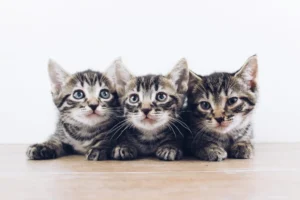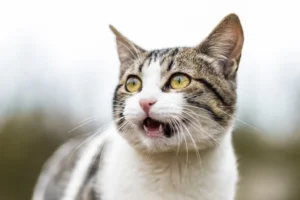Cats with their tails cut off is a topic that may raise eyebrows and concern among cat lovers and animal advocates alike. Many wonder why this practice occurs and what reasons could possibly justify such an action. In this blog post, we will explore the reasons behind why cats’ tails are sometimes cut off.
Overview of Tail Docking in Cats
So, what’s the deal with cats’ tails being cut off? Tail docking in cats involves the surgical removal of a portion of the tail. This procedure is typically done when the cat is just a few days old, and it’s mainly done for cosmetic reasons or to prevent injuries in certain working cat breeds. Some people believe that docking a cat’s tail can prevent future health issues, while others argue that it is purely a cosmetic choice.
Historical Perspective on Tail Docking
Let’s take a trip back in time to understand why cats’ tails have been snipped off in the past. Historically, cats’ tails were docked for various reasons, including superstitions about cats being associated with witches and in an attempt to prevent the spread of disease. In some cultures, cats with docked tails were valued for their hunting abilities or as a status symbol. However, as we have a better understanding of feline anatomy and behavior today, the practice of tail docking in cats is now viewed differently.
- Unique Insight: In ancient Rome, cats’ tails were docked to distinguish them from other domestic animals, as well as to prevent them from getting caught in traps while hunting. This practice has evolved over time and is now mostly done for aesthetic purposes or in specific working cat breeds.
Remember, the decision to dock a cat’s tail should always be made in consultation with a veterinarian, taking into consideration the cat’s health and well-being above all else.
Tail Docking in Different Cat Breeds
Tail docking is more common in certain cat breeds for various reasons. For example, Manx cats are known for their naturally short tails or lack thereof, and the practice of docking tails in this breed is often done to conform to breed standards. Similarly, certain breeds like the American Bobtail and Japanese Bobtail may have their tails docked for aesthetic purposes, as their tail length is a defining characteristic of the breed.
Additionally, certain working cat breeds such as the Cymric, which are known for their hunting skills, may have their tails docked to prevent injury while hunting in rugged terrain. It’s essential to research and understand the reasons for tail docking in specific cat breeds before considering it for your furry friend.
Unique Insight: While tail docking has historical and breed-specific significance, it’s crucial to consider the ethical implications of this practice and prioritize the well-being and comfort of our feline companions above all else.
Medical Justifications for Tail Docking
In some cases, tail docking in cats is justified for medical reasons. For instance, certain injuries to the tail, such as severe fractures or nerve damage, may necessitate partial or complete tail amputation to alleviate pain and prevent infection. Tail injuries can be especially common in outdoor cats or cats engaged in rough play with other animals.
Moreover, some cats with congenital conditions like Manx Syndrome, which can cause spinal defects and incontinence, may benefit from tail docking to improve their quality of life. However, it’s crucial to consult with a veterinarian to determine if tail docking is truly necessary for medical reasons and to explore alternative treatments or management options before opting for surgery.
Remember, the health and well-being of our feline friends should always be the top priority when considering any medical procedures.
Additional Tip: Always prioritize pain management and post-operative care to ensure your cat recovers comfortably and safely after a tail docking procedure.
Behavioral Considerations for Tail Docking
Tail docking in cats is sometimes done to prevent injuries that may occur due to the cat’s tail getting caught or stepped on. In some cases, cats with long tails may be more prone to accidents, especially in multi-pet households or if they are outdoor explorers. By reducing the length of the tail, cat owners believe they can help protect their furry friend from potential harm. Additionally, some cat owners may opt for tail docking to potentially reduce aggressive behavior in their feline companions. It is thought that by removing a portion of the tail, cats may exhibit less territorial behavior or aggression towards other animals.
Ethical Concerns and Alternatives to Tail Docking
When considering tail docking for cats, it’s essential to address the ethical concerns surrounding this practice. Many animal welfare organizations, including the American Veterinary Medical Association (AVMA), oppose tail docking unless it is medically necessary. The AVMA states that the procedure should not be performed for cosmetic reasons. Instead of tail docking, cat owners can explore alternative solutions to address behavioral issues or prevent injuries. Providing enriching environments, behavioral training, and regular veterinary check-ups are all effective ways to promote your cat’s well-being without resorting to tail docking. It’s crucial to prioritize your cat’s health and happiness while making decisions about their care.
Additional Insight: Alternative Solutions to Tail Docking
If you’re concerned about the potential risks and ethical implications of tail docking, consider investing in enriching toys and scratch posts for your cat to redirect their behavior positively. Regular playtime and mental stimulation can help reduce aggression and prevent injuries without resorting to surgical procedures. Additionally, consulting with a veterinarian or animal behaviorist can provide valuable insights into managing your cat’s behavior without the need for tail docking. By prioritizing your cat’s mental and physical health, you can create a safe and stimulating environment that promotes their overall well-being.
Interesting Facts About Cats’ Tails
Cats use their tails not only for balance but also for communication. A tail held high indicates a friendly mood, while a puffed-up tail signifies fear or aggression. Additionally, cats with long, bushy tails like Maine Coons can use them to maintain body temperature in cold weather by wrapping them around their bodies like a scarf.
Unique Insight: The Genetic Connection
Did you know that the length and shape of a cat’s tail are determined by genetics? Certain breeds, such as the Manx cat, are naturally born with either short tails or no tails at all due to a genetic mutation. This highlights the importance of understanding the significance of tails in a cat’s overall well-being.
Conclusion: The Importance of Understanding Cats’ Tails
Cats rely on their tails for various essential functions, from communication to balance. It is crucial to consider these factors when discussing tail docking practices to ensure the physical and emotional well-being of our feline friends. By understanding and respecting the natural behaviors and characteristics of cats, we can better advocate for their welfare.
Alex, a passionate animal lover, has experience in training and understanding animal behavior. As a proud pet parent to two dogs and three cats, he founded AnimalReport.net to share insights from animal experts and expand his knowledge of the animal kingdom.




